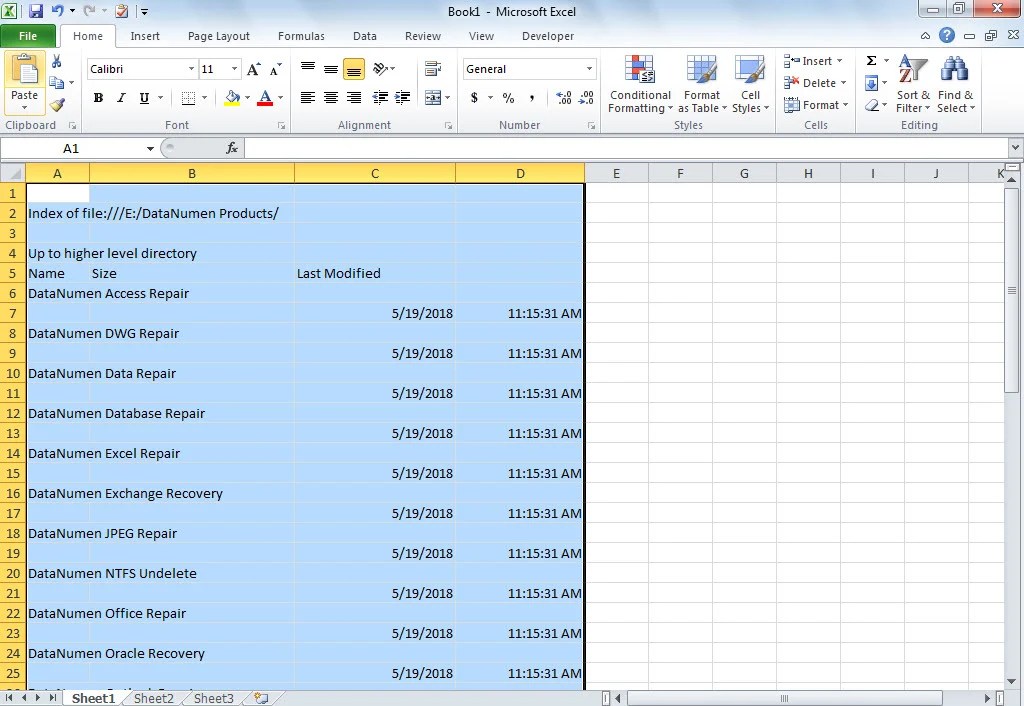How to Find Words in Excel Sheets Easily

One of the most common yet essential tasks for data analysts, accountants, or even casual users is to find specific words within large datasets in Excel. How to Find Words in Excel Sheets Easily can dramatically boost efficiency, reduce errors, and speed up data analysis tasks. Whether you are looking to search for errors, specific data, or perform text-based operations, this guide will walk you through the various methods to locate words or phrases in your Excel sheets with ease.
Basic Search Using Find and Replace


Let’s start with the basic functionality that Excel provides:
- Open Find and Replace: Use the shortcut Ctrl+F or navigate through 'Home' > 'Find & Select' > 'Find' to open the 'Find and Replace' dialog.
- Enter the Search Term: In the 'Find what' field, type the word or phrase you want to search for.
- Perform the Search: Click 'Find Next' to locate the first occurrence or 'Find All' to list all occurrences in a pane at the bottom.
🔍 Note: This method is quick and user-friendly for small datasets or when you need to locate words manually.
Using Wildcards for Advanced Searches

Excel’s Find and Replace feature can be enhanced with wildcards for more flexible searches:
- Asterisk (*): Represents any number of characters. For example,
in*will find "internet," "inspire," etc. - Question Mark (?): Stands for a single character.
t??tmight find "text" or "teat."
Here is how you can apply wildcards in your search:
| Wildcard | Use Case | Example |
|---|---|---|
| * | Find any number of characters before or after the specified term | *desk* would find "desk," "bookdesk," "desktop," etc. |
| ? | Find one character | ?amp would find "ramp" or "lamp" |

Conditional Formatting for Pattern-Based Searches

While not directly for finding words, conditional formatting can highlight words or patterns:
- Select Your Range: Highlight the cells you wish to check.
- Set Conditional Formatting Rule:
- Go to 'Home' > 'Conditional Formatting' > 'New Rule'
- Choose 'Use a formula to determine which cells to format'
- Enter a formula like
=SEARCH("word",A1)>0 - Set your formatting style
Using Advanced Filter for Detailed Search

An advanced filter can help you find rows with specific words or patterns:
- Select Your Range: Choose the area where you want to search.
- Set Up Criteria Range: Create a criteria table above your data with conditions.
- Filter Data: Go to 'Data' > 'Advanced' > choose 'Filter the list, in-place' or 'Copy to another location'
Example:
| Criteria | Content |
|---|---|
| Target Column Name | *word* |
VBA and Macros for Custom Searches

For repetitive or complex searches, VBA can automate the process:
Sub FindWord()
Dim FindMe As String
FindMe = InputBox("Enter the word to find:")
Cells.Find(What:=FindMe).Select
End Sub
Additional Tools and Add-ins

Many add-ins like Power Query and VLOOKUP can also be used to locate and manipulate text:
- Power Query: Use its 'Filter' option or 'Text.Contains' for searching through large datasets.
- VLOOKUP and MATCH: Match exact text or incorporate a search within their parameters.
In summary, finding words in Excel can be approached in several ways, each suited to different needs:
- For basic searches, the Find and Replace tool is straightforward and effective.
- Wildcards enhance flexibility, allowing for pattern-based searches.
- Conditional formatting highlights cells containing your terms, providing visual cues.
- Advanced filter and VBA macros offer custom and sophisticated searches.
- Third-party tools can provide additional capabilities tailored to specific tasks.
By mastering these techniques, you will not only improve your efficiency but also ensure that your data analysis in Excel is both accurate and comprehensive.
How can I search for partial matches in Excel?

+
Use wildcards like the asterisk (*) for any number of characters or the question mark (?) for a single character in the ‘Find what’ field of the Find and Replace dialog.
Can I automate searches in Excel?

+
Yes, with VBA, you can create macros to automate repetitive search tasks or even perform complex searches based on conditions.
What are the limitations of using Find and Replace?

+
It has limitations in handling very large datasets, complex patterns, or when searching for multiple terms or criteria at once.